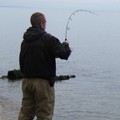theres been a few comments on this lately, i.m.o. its not a accurate enough to go by. 2 fish few inches in size differance at least 5lb. weight differance.
1is very fat. the other very thin. if you apply the length to weight ratio, in both cases it would be way out..
length to weight issue
Moderators: kieran, jd, Tanglerat, teacher
-
cortaz

- Convicted Poacher - No Shame
- Posts: 1716
- Joined: Mon Nov 07, 2005 12:20 am
- Favourite Rod: cantana.
- Favourite Reel: hyperloop.
- Favourite Fish: Bass.
- Location: waterford
length to weight issue
You do not have the required permissions to view the files attached to this post.
What I said in public
"Bass, there future in your hands, support catch and release"
..but I'm a liar really
http://www.sea-angling-ireland.org/foru ... 12&t=45629
"Bass, there future in your hands, support catch and release"
..but I'm a liar really
http://www.sea-angling-ireland.org/foru ... 12&t=45629
-
teacher

- SAI Megalodon!
- Posts: 2417
- Joined: Sun Mar 19, 2006 2:18 pm
- Location: North Wexford
There's a chart in the 1972 Kennedy and Fitzmaurice article (Kennedy and Fitzmaurice, "Biology of the Bass in Irish Waters", Journal of the Marine Biological Association, 1972). Here's a few rough average weight/length conversions (reading these approximately from the graph):
40cm 0.8kg
50cm 1.5kg
60cm 2.6kg
70cm 4.9kg
80cm 5.8kg
The graph doesn't distinguish between male and female fish.
There are 6 samples between about 58 and 62 cm ranging in weight from 2 to 2.8kg (i.e. a difference of about 2 lbs over 4cm).
Also, between about 70cm and 74cm, there are 9 samples ranging from 3.5 to 4.6kg. (another difference of more than 2 lbs over 4cm)
The deviation in the length/weight relationship becomes quite significant above about about 50cm.
40cm 0.8kg
50cm 1.5kg
60cm 2.6kg
70cm 4.9kg
80cm 5.8kg
The graph doesn't distinguish between male and female fish.
There are 6 samples between about 58 and 62 cm ranging in weight from 2 to 2.8kg (i.e. a difference of about 2 lbs over 4cm).
Also, between about 70cm and 74cm, there are 9 samples ranging from 3.5 to 4.6kg. (another difference of more than 2 lbs over 4cm)
The deviation in the length/weight relationship becomes quite significant above about about 50cm.
[size=75][i]"Pier fishing was, indeed, an eccentric, unproductive and extremely dull occupation, and even if we'd posessed the necessary heavy plant we decided not to attempt it."[/i] Chris Yates, Out of the Blue.[/size]
-
JimH
- SAI Megalodon!
- Posts: 1106
- Joined: Thu Feb 09, 2006 11:42 am
- Location: Wexford
Length - weight relationship
i think that some of the data tables were offered in the spirit of the question that was asked - guess the weight of the fish. Any degree of accuracy was not an issue or claimed - in the absence of other data these tables could be used as a general indication.
At the time of the collection of the data the rule and the scales were accurate - so the data collected was measured reasonably accurately. There was a higher number of fish data collected in the mid ranges than at both ends of the table.
'Probably' over any number of instances or averages and data can become 'interpretive'.
At the time of the collection of the data the rule and the scales were accurate - so the data collected was measured reasonably accurately. There was a higher number of fish data collected in the mid ranges than at both ends of the table.
'Probably' over any number of instances or averages and data can become 'interpretive'.